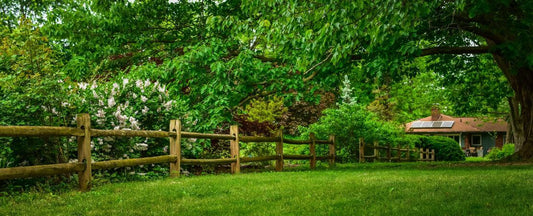Grow Your Own Carnations

Grow Your Own Carnations: The Beauty of Growing Dianthus
In the delightful world of gardening, few flowers rival the loveliness and ease of dianthus. Also known as pinks or carnations, these stunning plants offer a burst of color, delicate petals, and a sweet fragrance. At Wayside Gardens, we're thrilled to share the joy of growing dianthus with you.
Why Choose Dianthus?
Colorful and Fragrant Blooms
Dianthus boasts a variety of vibrant colors, from striking reds and pinks to soft whites and purples, adding a delightful charm to your garden. Additionally, these flowers emit a lovely, spicy scent that pleases your senses while also attracting beautiful butterflies.
Long-Lasting Flowers
Dianthus plants bloom generously, gracing your garden with color and cheer from spring through summer. Whether nestled in flower beds, containers, or rock gardens, dianthus ensures your garden stays resplendent for months on end.
Easy to Care for and Versatile
Dianthus flowers flourish in sunny spots with well-drained, slightly alkaline soil. They fit into nearly any garden setting with ease. Once established, these carnations require minimal maintenance, offering exquisite blooms without much fuss.
Planting Dianthus: Where to Add a Splash of Color
Sunny Spots for Vibrant Blooms
Dianthus loves the sun, so pick a sunny spot in your garden that gets at least 6 hours of sunlight each day. This will help them grow strong and produce lots of flowers.
Well-Drained Soil for Healthy Roots
To keep your dianthus happy, plant them in soil that drains well. Adding a bit of compost or sand can help improve drainage and give them the perfect home to flourish.
Companion Planting with Carnations for a Stunning Display
Pairing Dianthus with other plants can create a beautiful garden scene. Here are some great companions for your dianthus:
Lavender: Combine the sweet scent of dianthus with the calming aroma of lavender for a sensory delight in your garden.
Salvia: The tall, spiky flowers of salvia make a striking backdrop for the mounded shape of Dianthus, adding texture and interest.
Geraniums: The colorful blooms of Cranesbill geraniums look fantastic alongside dianthus, creating a cheerful and vibrant garden bed.
Coreopsis: For a burst of sunny color, mix dianthus with coreopsis. Their bright blooms complement each other perfectly.
Debunking Dianthus Misconceptions
Misconception: Dianthus Requires Constant Attention
Reality: Once your Dianthus plants are settled, they are delightfully low maintenance. A regular watering schedule, occasional deadheading (trimming back spent blooms), and a light pruning after blooming will keep them flourishing and blooming abundantly.
Misconception: Dianthus is Prone to Illness
Reality: While any plant can fall victim to diseases under certain conditions, Dianthus is generally resilient and tough. Ensuring they have good air circulation and avoiding overwatering will help these beauties thrive in your garden.
Benefits of Growing Dianthus
Carnations leaves come in various shades, from deep greens to silvery blues and purples. Even when not in bloom, their colorful foliage adds interest to your garden.
Depending on the type of dianthus, you'll enjoy different bloom shapes and petal sizes. The foliage is unique too with some types of dianthus having slender, grass-like leaves, while others are broader and more spear-shaped. Mixing the different varieties creates a visually appealing garden full of different textures.
Carnations are deer resistant because of their scent.
Get a pop of color, sweet fragrance, and an easy-to-care-for plant by adding dianthus to your garden and patio pots.
Growing Carnations in Pots: A Versatile Option
Don't have a large garden space ? No problem! Dianthus is an excellent choice for container gardening. Opt for a small pot with well-drained soil, ensuring it receives plenty of sunlight. This allows you to enjoy the beauty and fragrance of dianthus even on a balcony or patio.
Using Pinking Shears for Dianthus Care
When deadheading your dianthus (removing spent blooms), consider using pinking shears. These specialized scissors create a unique, zigzag edge on the stems, adding a decorative touch to your cut flowers. Plus, this method encourages new growth and prolongs the blooming season.
With their vibrant blooms, sweet fragrance, and easy care, dianthus flowers bring joy to any garden setting. From sunny flower beds to charming containers, dianthus adds a touch of elegance and cheer.
If you're looking for a deer-resistant plant, a long-lasting perennial, or simply a beautiful addition to your garden, consider dianthus. With its variety of colors, versatility, and resilience, it's no wonder these flowers have charmed gardeners for generations.



